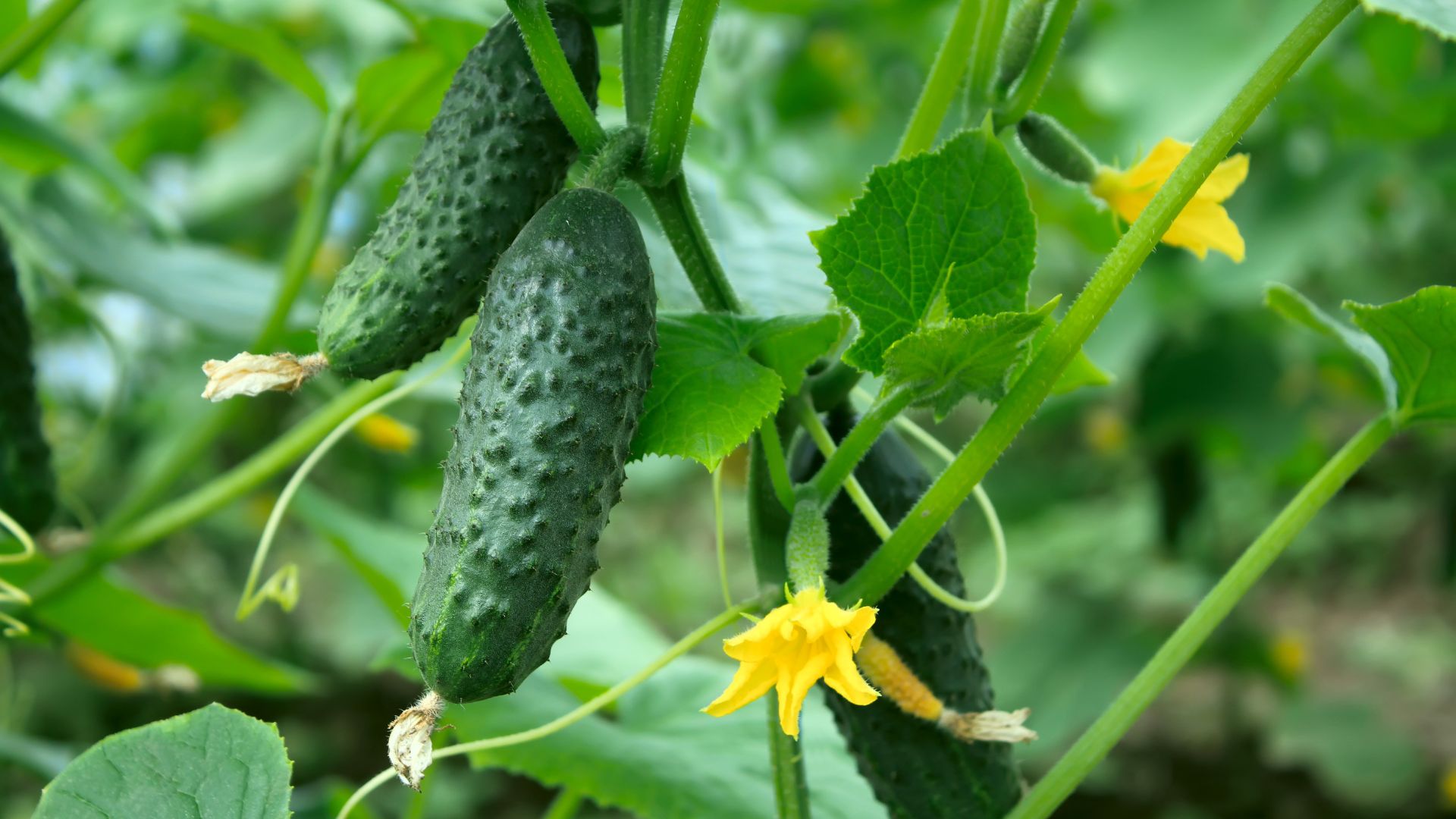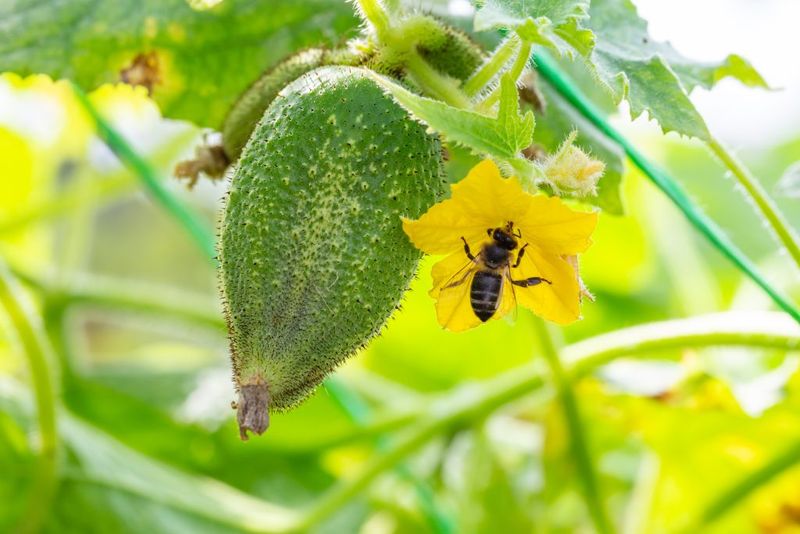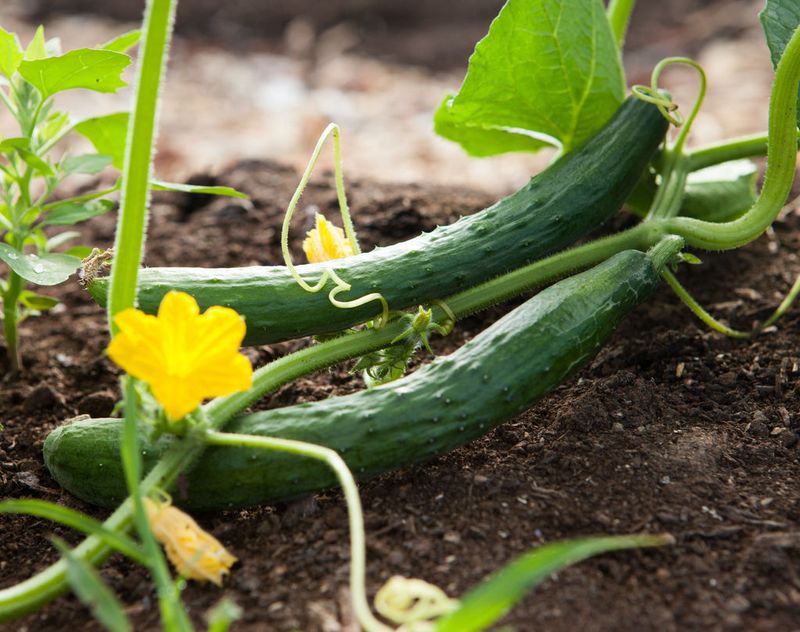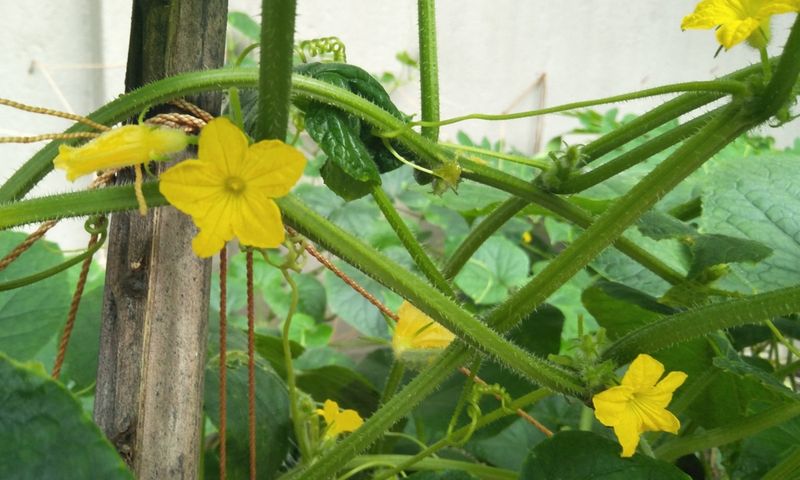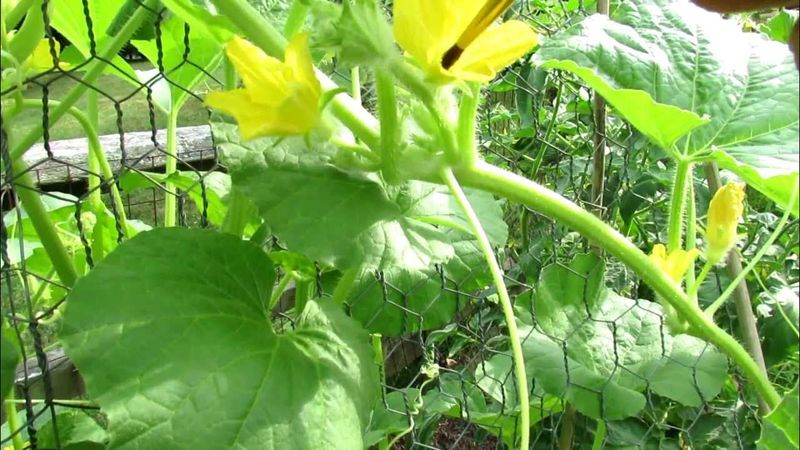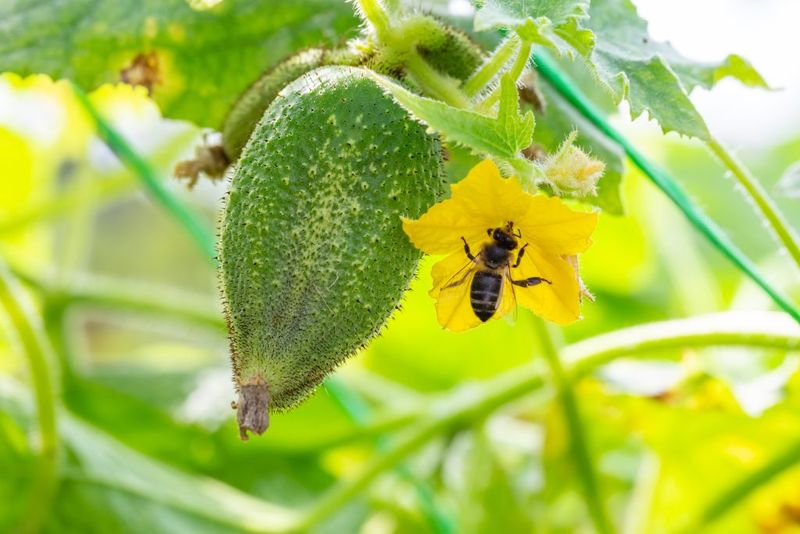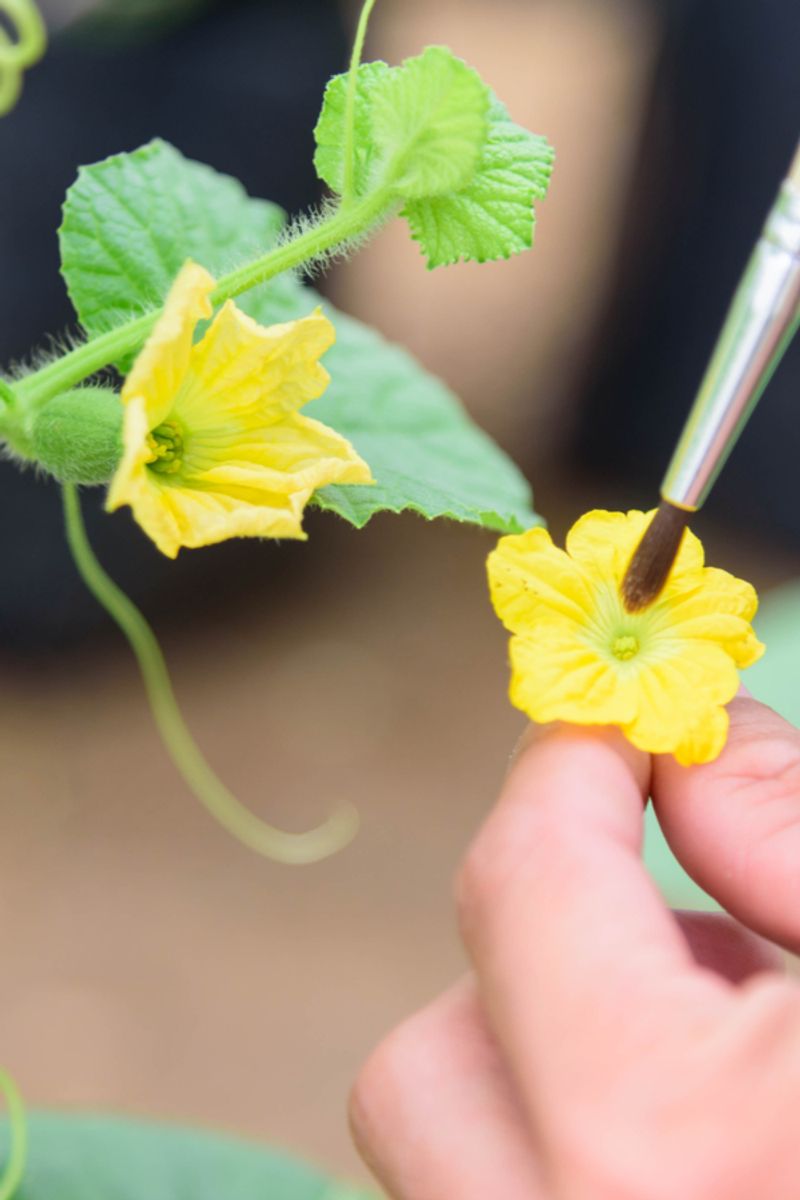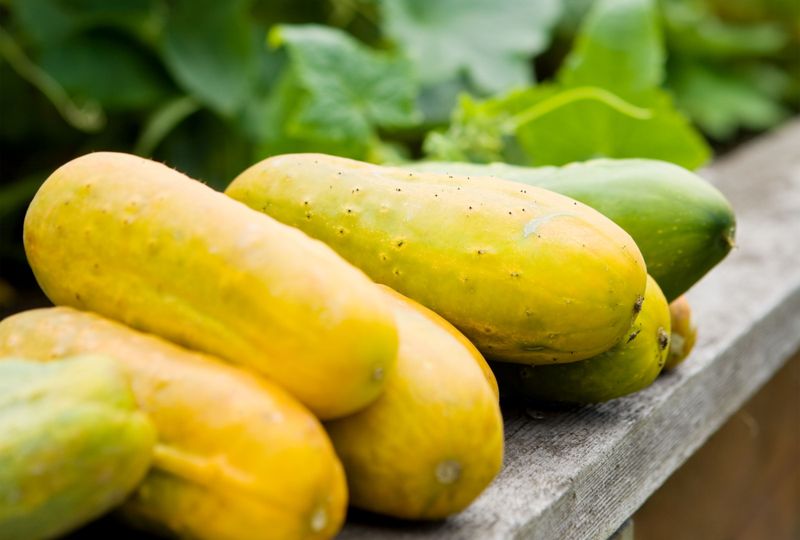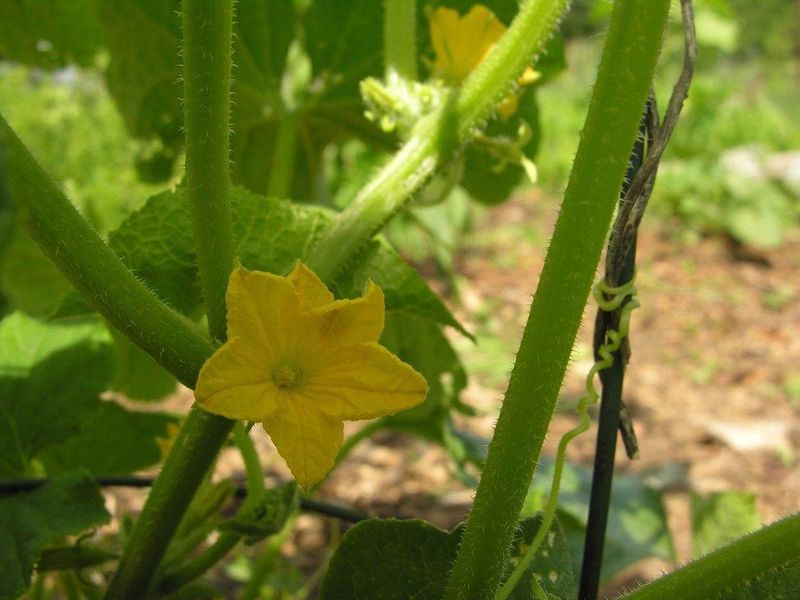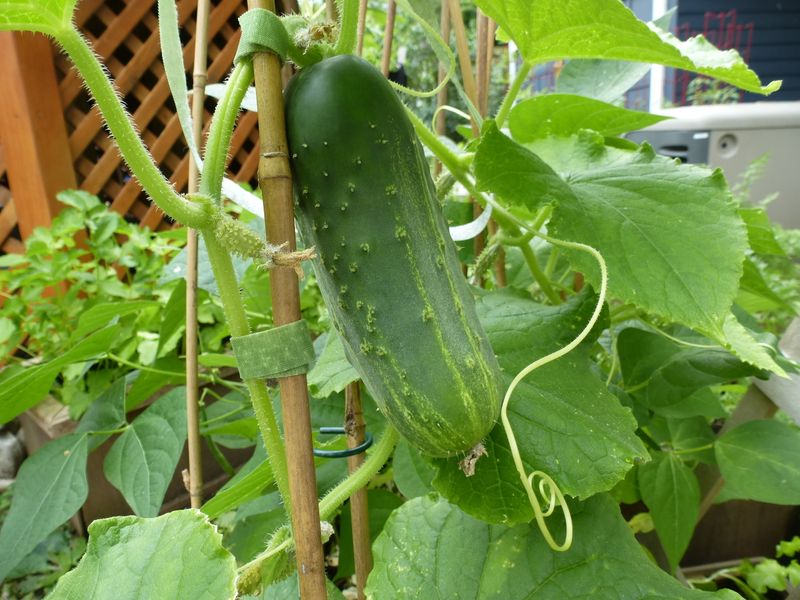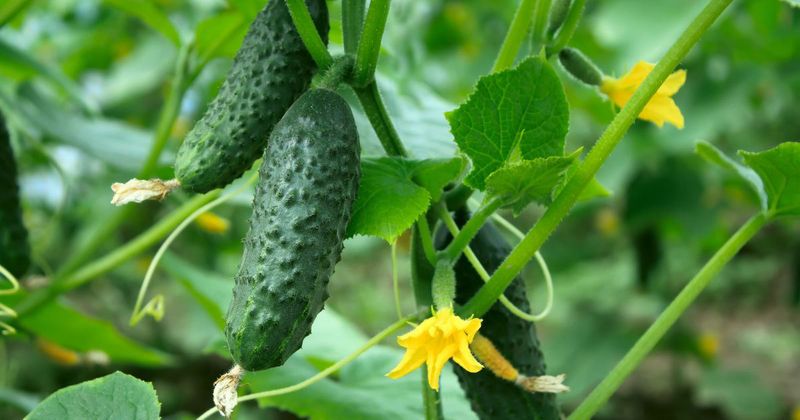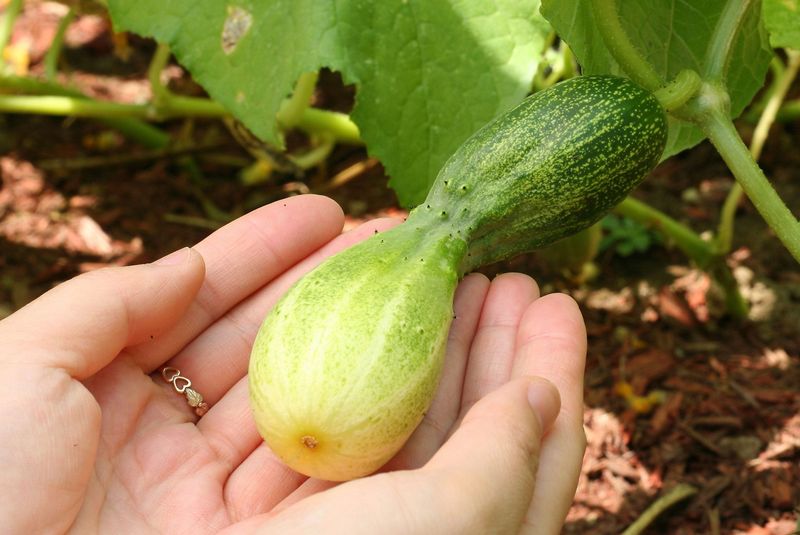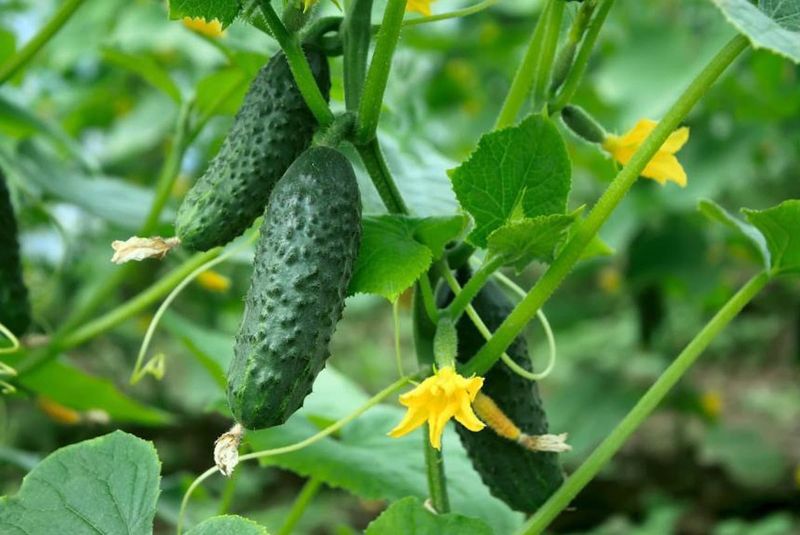Ever find yourself staring at your cucumber plants, wondering if they’re actually doing their thing? I’ve definitely been there—excited to see those little yellow flowers pop up, then impatiently waiting for cucumbers to show up.
But here’s the thing: good pollination doesn’t just happen on its own, and sometimes our plants need a little help. Learning to recognize the signs of successful pollination can save you from a lot of guesswork (and disappointment). Over time, I’ve picked up a few simple ways to tell if my cucumbers are on track.
So, here are some tips to help you figure out what’s going on with your cucumbers. Whether you’re new to gardening or just want to get better yields, these signs and tricks will make it easier to understand what your plants need.
1. Bee Activity
Bees are among the most reliable indicators of cucumber pollination. These busy insects transfer pollen from male flowers to female ones, enabling fertilization. If you spot bees buzzing around your cucumber plants, it’s a good sign that pollination is occurring.
Sometimes, the absence of bees can explain a lack of development. Consider planting bee-friendly flowers nearby to encourage their presence. Observing bee activity can provide essential insights into the health of your garden.
Keep an eye out for different bee species, as diversity often improves pollination efficiency and helps increase your harvest.
2. The Cucumber Starts To Plump Up
Ever noticed a cucumber starting to swell? This is a classic sign that pollination has taken place. Once a flower is pollinated, the cucumber begins to develop and grow larger.
If you observe this change, it indicates successful fertilization within the flower. Regular checks can help you identify these signs early on.
Monitoring the size and shape of your cucumbers can also alert you to any potential issues, such as incomplete pollination, often resulting in misshaped cucumbers. Swelling is a clear visual cue that your plants are thriving.
3. Baby Cucumbers Are Starting To Form
A healthy cucumber set is unmistakable proof of successful pollination. When you see tiny cucumbers forming at the base of a flower, it means that pollination has occurred.
Regularly inspect your plants to track development. This early stage is crucial for determining the future yield of your crop.
A lack of veggies set might indicate pollination problems, urging gardeners to take action. Consider hand pollination if natural methods fall short. Observing the set can guide your gardening practices toward better results.
4. Flower Wilting
A wilted flower can often signify successful pollination. After fertilization, the flower’s job is done, leading to its natural decline.
This change marks the transition from flower to cucumber, with energy redirected to growth. Wilting is a natural part of the cycle, reassuring attentive gardeners.
Understanding this process helps manage expectations, clarifying the relationship between flowering and growing. Observing flower wilting can be a key indicator of progress in your cucumber plants.
5. Presence Of Male And Female Flowers
Recognizing the presence of both male and female flowers is essential for pollination. Male flowers typically appear first, followed by females, which have a small cucumber-shaped ovary at their base.
These distinct features are vital for identifying successful pollination opportunities. A balanced ratio of male to female flowers often leads to better cucumber production.
Understanding these differences can enhance your gardening skills, ensuring you support the natural pollination process. Knowing your flowers promotes a more bountiful garden experience.
6. Increased Insect Activity
Increased insect activity around your cucumber plants often indicates active pollination. Insects like bees, butterflies, and even ants can contribute to the pollination process.
Encouraging a diverse insect population can enhance pollination success. Consider planting companion plants that attract helpful insects.
Monitoring insect visits provides clues about the health of your garden ecosystem. A flourishing insect community often correlates with successful pollination, leading to a more abundant harvest.
7. Hand Pollination Results
This is a practical technique when natural pollination is insufficient. Using a small brush, you can transfer pollen from male to female flowers to ensure fertilization.
This method is particularly useful in gardens lacking insect visitors. Observing the results of hand pollination can confirm its effectiveness.
Regular practice may improve the set and yield. Hand pollination provides control over the process, empowering gardeners to achieve desired results.
8. Color Change In Cucumbers
A change in color can be a subtle yet telling sign of pollination. As cucumbers mature, they often shift from a bright green to a darker shade.
This transformation signifies that the cucumber is developing well. Regular observation helps in tracking these changes.
Monitoring color shifts can also reveal any issues, such as disease or nutrient deficiencies. Keeping an eye on color can guide your gardening efforts toward better outcomes.
9. Time Of Year
The time of year can influence pollination success. Cucumbers generally thrive in warm weather, with pollination peaking during summer months.
Understanding the seasonal patterns helps gauge when to expect optimal results. Planning your planting schedule accordingly can enhance pollination efficiency.
Temperature and daylight play roles in promoting flower and development. Aligning your gardening practices with the seasons can lead to a successful harvest.
10. Humidity Levels
This can impact pollination. In some regions, high humidity can either aid or hinder the process, depending on the plant’s needs.
Monitoring local weather conditions can guide your gardening strategies. Adjusting watering practices to maintain ideal humidity may benefit pollination.
Understanding how climate affects your garden allows you to optimize conditions for better development. Tailoring your approach to humidity levels can boost pollination success.
11. Wind Pollination
Though less common, wind can assist in cucumber pollination by moving pollen between flowers. In gardens with limited insect activity, wind may fill the gap.
Creating an environment that allows for gentle airflow can promote this process. Observing wind patterns can provide insights into your garden’s dynamics.
While not the primary pollinator, wind contributes to pollination, especially in open spaces. Recognizing its role enhances understanding of your garden’s ecosystem.
12. Flower Longevity
The lifespan of a flower can indicate its pollination status. Flowers that remain open for an extended period may not yet be pollinated.
Conversely, flowers that quickly wilt often signal successful pollination. Monitoring flower longevity helps assess pollination progress.
Understanding these nuances aids in managing your garden effectively, ensuring flowers serve their purpose in attracting pollinators. Flower longevity offers valuable insights into the health of your cucumber plants.
13. Gardening Tip: Companion Planting
Companion planting can enhance pollination by attracting beneficial insects to your cucumber plants. Flowers like marigolds and lavender serve as excellent companions.
This strategy not only aids pollination but also deters pests. Integrating companion plants fosters a healthy garden ecosystem.
Experimenting with combinations can lead to improved results, making your garden more resilient. Embracing companion planting enriches your gardening experience, promoting natural pollination methods.
14. Cucumber Shape
The shape of a cucumber can reveal pollination success. Well-formed cucumbers typically indicate effective pollination, while misshapen ones suggest issues.
Regular inspection helps catch these signs early, allowing for corrective action. Analyzing cucumber shape contributes to understanding pollination dynamics.
Addressing misshaped cucumbers can enhance future yields. Paying attention to shape helps cultivate a productive garden, highlighting the link between structure and pollination.
15. Pollen Visibility
Visible pollen on cucumber flowers can hint at ongoing pollination. The presence of pollen grains often means that pollinators are visiting.
Inspecting flowers for pollen provides clues about pollination activity. This visual check is a simple yet effective way to gauge progress.
Understanding pollen dynamics aids in assessing flower health and attracting pollinators. Visible pollen is a straightforward indicator, helping gardeners monitor their plants with ease.

